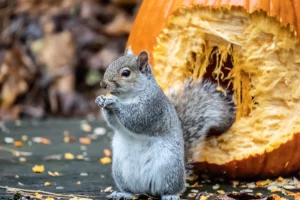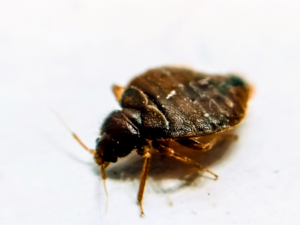Home / Blog / What You Need to Know About Round-Headed Borers (Cerambycidae)
What You Need to Know About Round-Headed Borers (Cerambycidae)

Scientifically reviewed by Daniel Baldwin, BCE, CCFS, CP-FS
-Published on May 22, 2023
-Updated on May 22, 2023
If you live in a wooded area, store firewood outdoors, or have trees in your landscaping, round-headed borers (Cerambycidae) may take up residence in your yard. Knowing how to identify them and what attracts them can help you deal with infestations when they occur.
What is a round-headed borer?
A round-headed borer is the common name for the larvae of beetles from the Cerambycidae family. These species include the banded alder borer, the nautical borer, and the California prionus, all native to North America. Other common types of round-headed borer larvae were introduced from other countries, like the Asian long-horned beetles and eucalyptus long-horned borers.

What do round-headed borers look like?
A round-headed wood borer larva looks like a fat worm with a long, deeply wrinkled body that is usually white, cream, or light yellow. Their heads are small and hard to distinguish from the rest of their bodies except for their large brown or black mouth parts, which you can see sticking out in front. Round-headed borers have legs that are very short and difficult to see, especially when you view them from above.
In the adult stage, round-headed borers are usually about an inch long. Compared to beetles from other families, they typically have longer, thicker antennae that almost resemble horns. Markings vary from species to species.
What attracts round-headed wood borers?
Adult beetles from the Cerambycidae family look for places to nest easily. They prefer trees that are already sick or suffering from moisture damage. When they find this type of wood, the pests chew through the outer layer of bark and then lay their eggs underneath. When they hatch, round-headed wood borers tunnel into the wood, entering the pupa stage. Then they emerge as adults.
Due to the nesting preferences of the beetles, you’re more likely to experience a round-headed borer infestation if you have ailing or dead trees on your property, fallen logs, old tree stumps, or unprotected firewood piles. When the beetles nest in firewood, they may get accidentally transported indoors.
Generally, round-headed borers can’t nest in treated lumber. As a result, they’re typically not attracted to wood homes, wooden outdoor structures like decks and porches, or wooden patio furniture.
What are the signs of round-headed borer infestation?
Although they can be a nuisance, rounded-headed borers don’t bite, sting, or pose a risk to human health. Unfortunately, the pests can be harmful to trees. Some signs of an infestation include:
- Round holes in bark from where adult round-headed borers emerged
- Piles of reddish-brown or brown sawdust left behind when adults exit trees
- Cracks in bark from nesting
- Stains on the bark that occur when sap leaks out due to the pests’ tunneling
- Oozing from the limbs or trunk, also due to sap
How do you get rid of round-headed borers?
Removing potential nesting sites is typically necessary to get rid of round-headed borers outdoors. Have tree stumps and fallen trees promptly removed from your property. If your trees fail to thrive, consider having them removed or treated by a professional arborist.
If you store firewood outdoors, take steps to limit access to it. Consider keeping it stored in an outbuilding or tightly covered with a tarp or cover that is insect-proof.
Prevent round-headed borers from accidentally getting into your home by inspecting firewood carefully. Don’t use the wood in your stove or fireplace if you notice any of the above signs of an infestation.
Related Articles
Visit our blog to learn more.
→





